
Boat checking before departure
In the following lines we will describe some useful steps, which are good to be done, almost every time you use your boat.
* * * All that are suggested, are NOT required to be done by the owner and of course anyone can alone weigh his skills and abilities!!!

Check the boat perimetric
Regarding inflatable boats, firstly, check the air pressure in the air chambers. Then pay attention for wear, pirs, tears and the status of fiber weave in general. Extra care is needed at the transom in general (ecpecially under), on the transom holder and under the cones, where the sea water contact is permanent and applies strong pressure due to the weight and motion friction.
On fiberglass surfaces, cracks or unusual shapes like a spider web design at the transom or to the side surface of the boat (especially when there are permanently parked boats next to ours e.g. in port or marina), should not leave us indifferent and should be inspected by a specialist.






Open the engine covers and check perimetric the engine.
Observe if everything is in place or whether something is disconnected.
Inspect the engine block and the lower unit (gear box) of the engine for leakage.
* * * CAUTION: DO NOT TOUCH THE ENGINE WHEN IN OPERATION!!! * * *


Check the oil level indicator
Be sure the engine oil has the correct level (for four-stroke engines).
If it smells bad, or the consistency is not the right, or water blemishes appeared, consult a specialist.

Check moving parts
Be sure they are clean and they are able to move with ease. Check for wear.



Check the wiring
Make sure there are no oxidations at the ends of the cables. The terminals are clean. Check for wear
There should be no cuts or burnt cables.


Check bilge pump
Check it works and the area is free of water and dirt.
If you see any water try to find the reason.

Check the one-way drain valve (if equipped) for proper operation
Be sure the membrane is completely closed when the boat is stationary and there is no dirt, because it will not function correctly.


Open the main battery switch for the boat (if available), or connect the terminals on the battery.
Make sure there are no oxidations at the ends of the cables. The terminals are clean. Check for wear.
There should be no cuts or burnt cables.


Check the fuse box and boat’s lights
Check for rust or loose connections or burn bulbs.


Check the power supply of the boat
Is there sufficiency power? Does the engine’s power trim works fine?
Is power supply available everywhere on boat?


Check fuel, filters and fuel pipes
Old petrol is inappropriate and harmful for modern engines.
If you have old fuel, pour it out. The moisture in the fuel will be converted into water and water in the engine is causing problems.
If you have a few old fuel and cannot be removed, only then fill the tank with fresh gasoline.
Adequacy test on mainly fuel and reserve fuel BEFORE started!
Inspect tanks holders.
Fuel leak check.
Supply fuel pipes with no obstacles.
Dried (too hard), or too soft or "sticky" when pressing with bare fingers fuel pipes, should be replaced.



Filters with dirt or water must be cleaned or replaced.



Open the main fuel switch (if any) or the valve vent of the fuel tank.

Start your outboard engines
First of all start the outboard engines (the main and the spare engine if possible) in idle and hear that they work smoothly. We also check for oil leaks.


Check the cooling system
Check the water indicator that the outgoing water has the correct adequate and steady flow.


Observe the engine’s and the boat’s gauges and make sure no warning lamp lights and no warning buzzer sounds. See the voltmeter and make sure the batteries have sufficient charge.


Open cupboards and cabin
If you smell gas or gasoline, then you should consult a specialist.
Refresh your memory about where we have your stuff if you have shortcomings.

Look your tapestries and bellow cushions for black spots.
This means that there are unwanted mold microorganisms. Consult a specialist.



Check boat canopy bimini
Buttons and zippers should be clean.
Check for any damage that may get worse during the trip.

Did anything left from its position?
Check for holes that may indicate that something is missing. A screw, a nut, a damage from the previous time. Make sure you do not miss anything useful.
Hinges, locks and articulated parts, should be clean and lubricated.



Check the safety equipment of the boat
It is important to have all statutory requirements for your boat.
Make sure they are all in good condition, dry and functioning.
Check expiration dates of your parachute distress signal and your daylight smoke signal.
Replace that is needed, since it is for your own safety!
Naturally all safety equipment MUST be easy accessible!

Ensure that the steering system operates smoothly and without difficulty.

Do proper weight distribution of equipment and passengers for better cruising.



We make sure that everyone knows the use of safety equipment (especially lifejackets, parachute distress signal, daylight smoke signal and fire extinguisher.
If there are children or someone who do not know swimming, wear them their life jackets.

We make sure that there is nothing (or nobody) too close to the outboard engine to prevent its right operation or will be entangled on it during the journey.
Lock the boat’s ladder and the spare outboard motor on the right position.
Wear the quick stop cord at your wrist.

Secure on board all objects that can "fly away" by the boat’s motion.
When we are leaving a place surrounded with swimmers we are using the oars.
Care not to smoke.
We move with the provisions speed limits.
We do not throw garbage and we respect others.
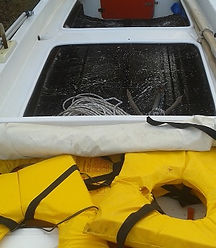
Better safe than sorry...
We suggest you to keep a toolbox on your boat.
Something small and easily manageable can happen during our trip and put us in trouble.
With the right tool we can treat it and continue without a problem.
A toolbox should certainly include:
Insulation tape, stick with it, connect and isolate.
A set of screwdrivers, various sizes.
Pliers
Cutter
Spark plug wrench
Lubricant spray
Marine grease
Hammer
Wrench
Cable ties
Sandpaper
A set of allen keys
Some stainless steel screws, washers and nuts of different sizes.
Fuses and light bulbs for all lights and functions on board.
Wire, we can make any shape we may need.
Wrench and security nut for the engine’s propeller.
Mask and flippers, to check if needed the propeller or hull, or keel of the boat.
Preventive before dive remove the key from the ignition.
The engine manufacturer's manual contains useful and simple instructions that can help you in a difficult moment.

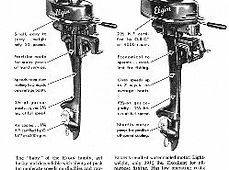
Of course pharmacy, lifesaving equipment (parachute distress signals, daylight smoke signal, fire extinguisher, life jackets, bucket, pocket knife, flashlight, floating anchor, rope, paddles, mobile phone and spare battery as well as anything else that describes the license of your boat).
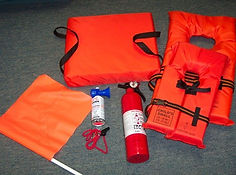
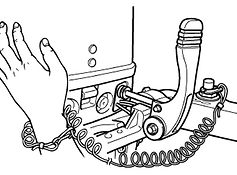
For speedboats with higher horse power outputs, a spare propeller together with plastic hub and nut should always be on board.
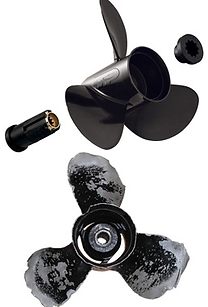
The operator should know the engine’s manual starting procedure (with cord), in case of a starter motor damage.
The starting cord is always located inside the power head cover of the outboard engine!
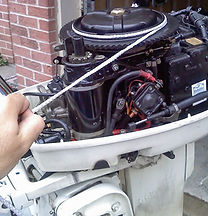
This procedure can only be done on small-displacement engines!!!
For high horse power engines a backup engine is the only solution.
IMPORTANT NOTE
In the above lines with the instructions described in no way intended to replace a professional mechanic specialist for outboard engines and pleasure boats !!!
This would be naive and dangerous.
* (If you do not have the appropriate time or do not feel that you have the relevant experience, all the above services are available from our store).
I hope you found usefull these tips.
Have fun!

